Sugarcane: an unexpected habitat for black yeasts in Chaetothyriales
- PMID: 37794500
- PMCID: PMC10552356
- DOI: 10.1186/s43008-023-00124-7
Sugarcane: an unexpected habitat for black yeasts in Chaetothyriales
Abstract
Sugarcane (Saccharum officinarum, Poaceae) is cultivated on a large scale in (sub)tropical regions such as Brazil and has considerable economic value for sugar and biofuel production. The plant is a rich substrate for endo- and epiphytic fungi. Black yeasts in the family Herpotrichiellaceae (Chaetothyriales) are colonizers of human-dominated habitats, particularly those rich in toxins and hydrocarbon pollutants, and may cause severe infections in susceptible human hosts. The present study assessed the diversity of Herpotrichiellaceae associated with sugarcane, using in silico identification and selective isolation. Using metagenomics, we identified 5833 fungal sequences, while 639 black yeast-like isolates were recovered in vitro. In both strategies, the latter fungi were identified as members of the genera Cladophialophora, Exophiala, and Rhinocladiella (Herpotrichiellaceae), Cyphellophora (Cyphellophoraceae), and Knufia (Trichomeriaceae). In addition, we discovered new species of Cladophialophora and Exophiala from sugarcane and its rhizosphere. The first environmental isolation of Cladophialophora bantiana is particularly noteworthy, because this species up to now is exclusively known from the human host where it mostly causes fatal brain disease in otherwise healthy patients.
Keywords: Cladophialophora bantiana; Metagenomics; Selective isolation.
© 2023. International Mycological Association.
Conflict of interest statement
The authors declare that they have no competing interests.
Figures
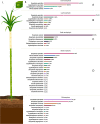
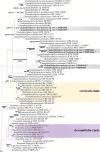

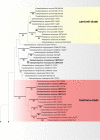



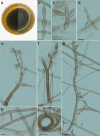
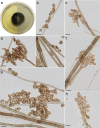

References
-
- Alves F. Por que morrem os cortadores de cana? Saúde Soc. 2006;15:90–98. doi: 10.1590/s0104-12902006000300008. - DOI
-
- Bobba S. Case study: chromoblastomycosis. J Trop Dis. 2014 doi: 10.4172/2329-891x.1000143. - DOI
-
- Canilha L, Chandel AK, Suzane SMT, Antunes FAF, Luiz CFW, Das Graças AFM, Da Silva SS. Bioconversion of sugarcane biomass into ethanol: an overview about composition, pretreatment methods, detoxification of hydrolysates, enzymatic saccharification, and ethanol fermentation. J Biomed Biotechnol. 2012 doi: 10.1155/2012/989572. - DOI - PMC - PubMed
Grants and funding
LinkOut - more resources
Full Text Sources
